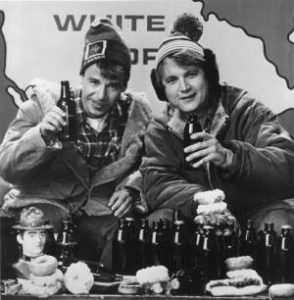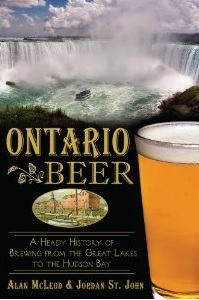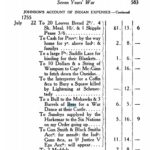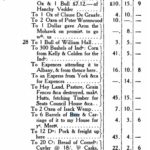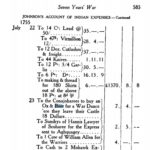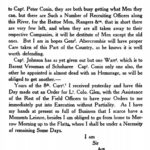Martin Frobisher. He was taking a group of miners to what later gets called Baffin Island¹ in the Canadian high Arctic to dig for ores. The image is from The Three Voyages of Martin Frobisher, a book from 1938 that reprints the 1576-78 journal of crew member George Best along with other records. It is very likely that this is not of the first beer in any respect. Almost certain. Because it is from the second of the expeditions. The 1576 expedition had five tons of “beare” listed amongst the “furniture” – as in things furnished – for the voyage. So it’s nearly the first… maybe.
The thing I thought I would find as I have seen elsewhere was barrels of malt and hops being shipped over. I’ve seen it on Newfoundland’s shores about twenty years later as well as in Hudson Bay a century later. But this was no crew of masterless West Country men salting west Atlantic cod or factors left to overwinter to trade in northern furs. Nope. Frobisher’s crew was funded by Earls, Countesses and Lords to the tune of 50 to 200 pounds each. The Queen’s Majesty herself threw in a rounded thousand. There was a surgeon on board as well as four tons of cheese. Almonds and raisins plus two firkins of prunes. Just in case. They are living in style. There is both Malmsey and sack, for heaven’s sake. That would now be described as Madeira and sherry respectively.
A gallon of beer for each man each day. Likely downed in wooden tankards like these. A gallon. That is the equivalent of twelve 12 oz or 350 ml bottles a day every day. In 1576, it was two pounds two shillings for a ton of beer but two pound five shillings in 1577. Seven percent inflation over one year is unlikely. Maybe a better grade of beer? Not a lot of detail of the life on shore in the accounts. Just interaction with the local Inuit as well as the work gathering of tons of ore. Each group seemed to appear pretty silly to the other.
¹… because our lad Billy Baffin isn’t even born until around 1584.


